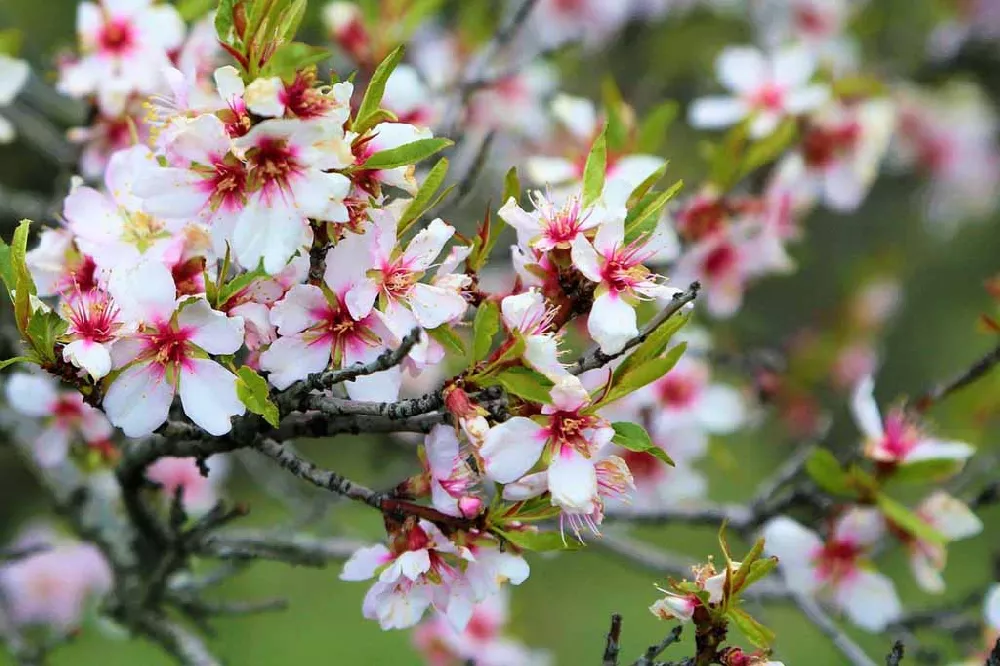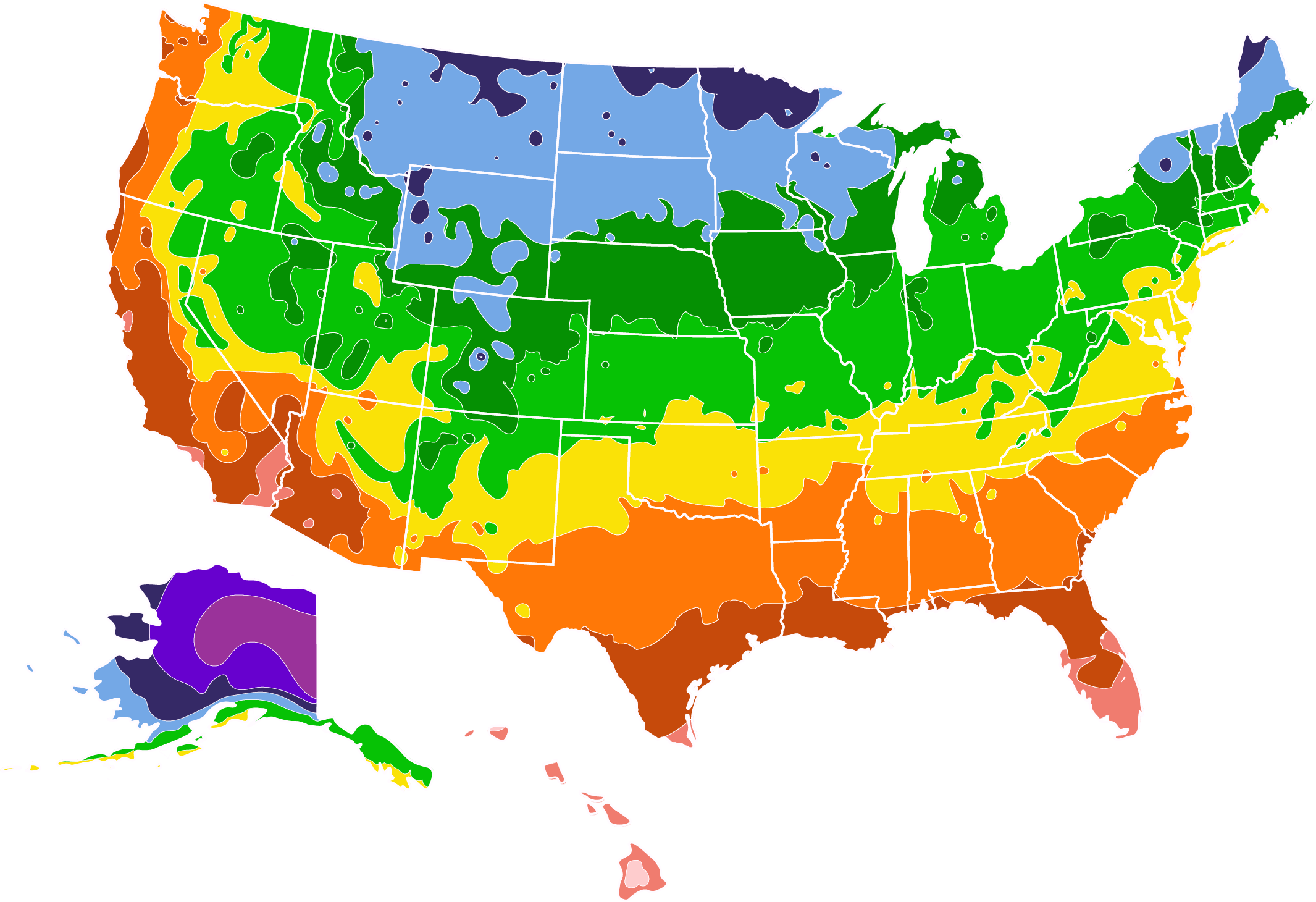- Home >
- Nut Trees >
- All-In-One Almond Trees
All-In-One Almond Trees for Sale - Buying & Growing Guide
Ty Ty Nursery - Hall's Hardy Almond Tree
Online Orchards - 3-4 ft. - All-In-One Almond Tree - Cold hardy, great flavor, easy growing
Raintree Nursery - 4-5ft. - All-In-One Almond
Enter your zip code to find nearby stores that may carry this plant.
Plant Care
Sunlight
Most productive with at least 6 hours of sun each day.
Watering
During its first year, water deeply every week. Once established, water deeply whenever the soil dries out or it's very hot out.
Fertilizing
Fertilize lightly when young with a 10-10-10 fertilizer. Fruiting trees should get a cup of fertilizer per each year of the tree's life. Too much fertilizer will burn tree roots.
When it comes to combining the beauty of a flowering tree with the ability to harvest a delicious crop, home landscapers can’t ask for much more than the All-In-One Almond Tree (Prunus dulcis). This compact plant is self-fertilizing, eliminating the need for multiple trees. Although its 15 foot height and eight to 10 foot spread is just half the size of other almond trees, it still delivers plenty of soft-shelled nuts for the small space gardener to enjoy. Other notable characteristics of All-In-One Almond Trees include:
- It’s a flowering ornamental tree as well as a food source.
- The tree is very hardy and grows in areas with mild or cold winters.
- It prefers full sun and grows well in a wide range of soil types with good drainage.
Planting and Care
Planting instructions
Unlike other almond tree varieties, the All-In-One Almond Tree is easy to grow and tolerates a range of soils and temperatures. They prefer full sun but they can grow in partial shade, although less sun will lead to fewer flowers and fruit. They thrive in rich soil but can tolerate almost any type of soil that is not too wet. The trees must have good drainage.
Plant your almond tree in the early fall, when the summer’s hottest temperatures have passed but the plant still has time to establish its roots before the freeze. Place your tree in a hole that is at least as deep as the plant’s root ball and twice the width. Gently spread the roots, then fill the hole with soil that is compacted around the roots. If your All-In-One Almond needs additional stability, a stake can keep it upright until it is established.
Watering and nutrients
Freshly planted All-In-One Almond Trees will need regular watering, but as the plant becomes more established you will simply need to keep the soil moist. They are drought tolerant but dry conditions will result in a significant drop in nut production. Although the All-In-One Almond requires less water than other almond tree varieties, they will benefit from additional watering during hot, dry summers and in early fall. Almond growers advise that you stop watering the plant a few days before you harvest the almonds. Doing so will pull water away from the nuts, making them easier to pick.
As for nutrients, you can fertilize the All-In-One Almond Tree with a balanced product designed for fruit/nut trees in spring and early summer.
Pruning
Pruning your All-In-One Almond Tree will both maintain the shape that you want and help to encourage new growth. However, young almond trees should not be pruned. Wait until your tree turns three years old, then prune lightly by only removing dead, diseased or damaged limbs. Prune your plant during its dormant period in the winter
Harvesting
All-In-One Almond Trees yield fruit late in the fall. They are ready to be picked when their hulls begin to split. At that point, avoid watering for several days and then place a sheet, tablecloth, or tarp under the tree’s branches and shake them. Ripe almonds will fall onto the tarps, making collection easy.
The All-In-One Almond Tree yields sweet, delicious almonds. To eat them, remove them from their hulls and let them dry out by storing them in a cool, dry spot.
Pests, diseases, and animals
All-In-One Almond Trees are vulnerable to mites, scale insects, and ants. Trees affected by mites will experience yellow speckling on their leaves. You can spray horticultural oil onto the trees to prevent mite eggs from hatching, while you can address adult mites with miticide spray or neem oil, which will also control scale insects. Take care of ant infestations by wrapping a waterproof material around the tree’s base and then smearing it with a sticky material known as Tanglefoot.
Almond trees are vulnerable to a soil-borne disease called verticillium wilt that can make leaves on one branch turn yellow or brown. You can prune off the affected branch. Avoiding overwatering is key to preventing this disease (as well as fungal diseases), which the tree will eventually outgrow.
Keep an eye on your almond trees, as they are particularly enticing to squirrels. Many gardeners have found netting the tree necessary.
Light
Almond trees should be planted in a position where they will receive full sun. They need at least six hours of direct sun each day, but a greater amount of sun will result in a greater abundance of fruit. The tree can survive in partial shade, but it will produce a much smaller volume of flowers and may struggle to set fruit.
Temperature
Almond trees like climates that experience long, hot summers, providing them with a long growing season. During very hot summers, you can whitewash the trunks of almond trees to protect them against sunscald. Although they enjoy the heat, they also require a certain amount of cold weather in order to break the dormancy of buds. Ideally, the tree should get between 300 and 400 hours each year of temperatures that are lower than 45 °F. This requirement is the reason why almond trees do not grow well in tropical climates, as they don’t get cold enough for long periods of time. However, it makes the almond tree ideal for growing in climates such as those found in California and states on the US east coast.
The almond tree is hardy to USDA zones 5 to 9 and will struggle outside of these regions. It can handle frost, but a very late frost may affect the development of flowers.
Propagation
Almond trees are most commonly propagated by root graft. This ensures that the new tree is an exact copy of the parent tree, and means you can rely on it producing good fruit. Use a hardy rootstock, ideally peach, and then graft a fruit-bearing almond branch onto the rootstock.
You can also grow the tree from seed, but this will take much longer and may produce a tree different from the parent plant. To use your almond nut for propagation, soak a fresh nut in water for 48 hours. Then, set the nut on a paper towel and enclose it in a plastic bag. Leave the bag in a refrigerator for around a month, at which point you should see some sprouts forming.
Once you have sprouts, you can plant the nut in moist, well-draining soil in a pot. Position it on a warm and bright windowsill and wait for more growth. At around a height of 6 to 8 inches, you should transfer it to a larger pot. Once the tree has developed a strong root system, you can plant it outside.
FAQs
How long does it take for an All-In-One Almond to bear fruit?
The tree will begin to yield fruit two to four years after planting.
Is the All-In-One Almond Tree hard to find?
The All-In-One Almond is one of the most popular almond trees for home landscapes. They are generally available through both local nurseries and big box landscaping sources.
Do the flowers of the All-In-One Almond Tree have a scent?
The scent of the flowers will fill a small garden space, and smells like a combination of honey and vanilla.











